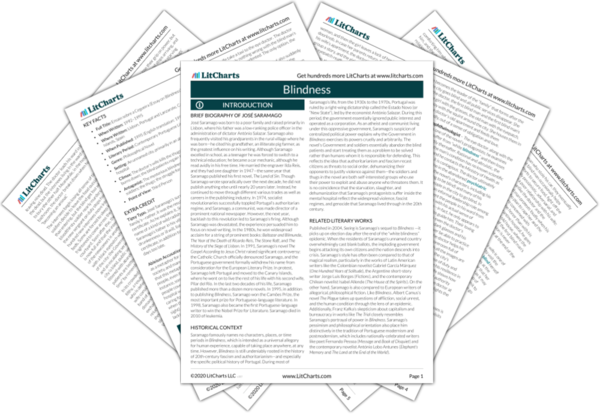Medicine is incapable of explaining or resolving the man’s blindness, which seems to have a supernatural or immaterial cause, unlike most of the problems that humans face (and are capable of resolving through science and government). But this does not change the fact that the blind man must now adapt to his new circumstances, and this struggle in the face of an inexplicable crisis is a metaphor for the human condition as a whole. The doctor’s injunction to “wait and see” shows that, in his rational medical attitude toward risk and uncertainty, hope is just as logical as disappointment when one is faced with inexplicable causes and effects. Meanwhile, the man’s dream implies that he is finally beginning to grasp the reality of his condition and accept that it may be permanent.
